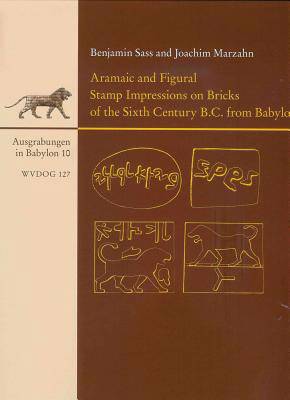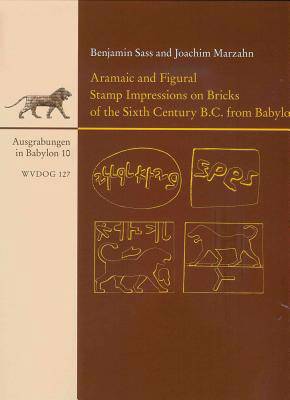
- Afhalen na 1 uur in een winkel met voorraad
- Gratis thuislevering in België vanaf € 30
- Ruim aanbod met 7 miljoen producten
- Afhalen na 1 uur in een winkel met voorraad
- Gratis thuislevering in België vanaf € 30
- Ruim aanbod met 7 miljoen producten
Zoeken
Aramaic and Figural Stamp Impressions on Bricks of the Sixth Century B.C. from Babylon
With Drawings of the Aramaic and Figural Impressions by Noga Z'Evi
Benjamin Sass, Joachim Marzahn
Hardcover | Engels
€ 175,95
+ 351 punten
Omschrijving
The book addresses the 335 Aramaic and figural impressions on bricks of the sixth century B.C., most of them uncovered during the German excavations in 1899-1917. This treasure trove, that remained practically unpublished for a hundred years, is well dated by cuneiform impressions, found on the same bricks, of Nebuchadnezzar II (605-562 B.C.) and his immediate successors. The Aramaic and figural brick impressions close a gap in our knowledge about Aramaic palaeography (the stamp legends are in the monumental script, hitherto poorly documented for the sixth century), contribute to our understanding of the onomasticon and the iconography of the period, and touch upon the history of the Aramaean presence in Babylon and upon the royal building activity there.
Specificaties
Betrokkenen
- Auteur(s):
- Uitgeverij:
Inhoud
- Aantal bladzijden:
- 259
- Taal:
- Engels
Eigenschappen
- Productcode (EAN):
- 9783447061841
- Verschijningsdatum:
- 19/07/2010
- Uitvoering:
- Hardcover
- Formaat:
- Genaaid
- Afmetingen:
- 249 mm x 351 mm
- Gewicht:
- 1737 g

Alleen bij Standaard Boekhandel
+ 351 punten op je klantenkaart van Standaard Boekhandel
Beoordelingen
We publiceren alleen reviews die voldoen aan de voorwaarden voor reviews. Bekijk onze voorwaarden voor reviews.








